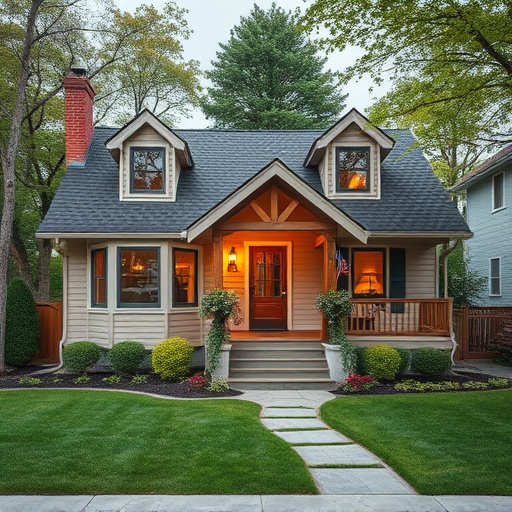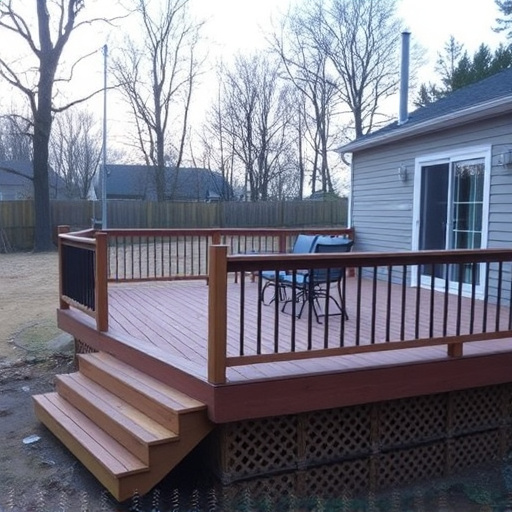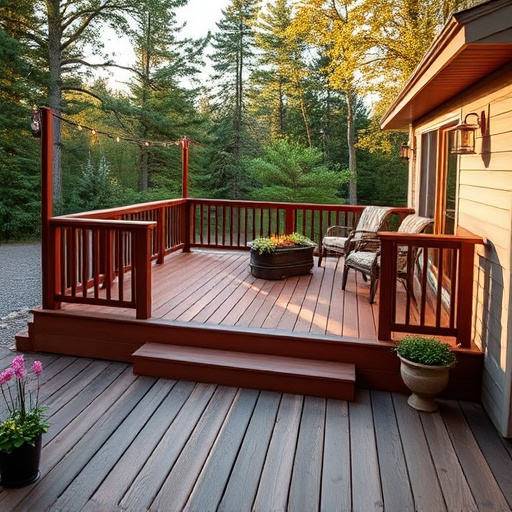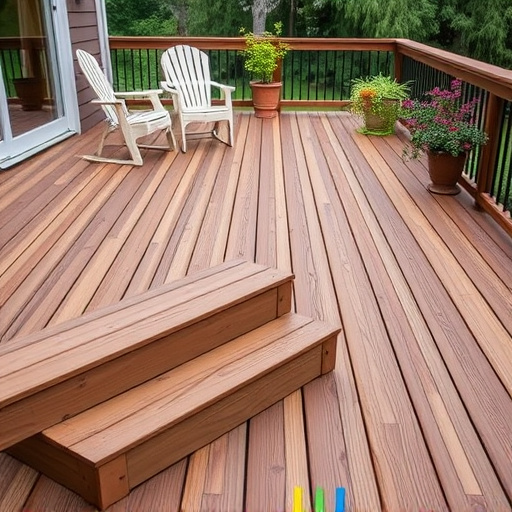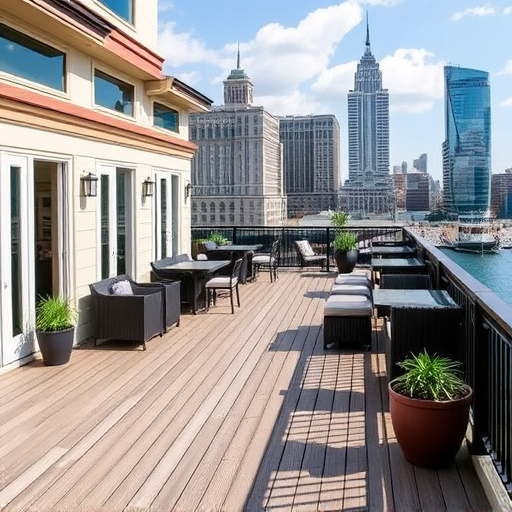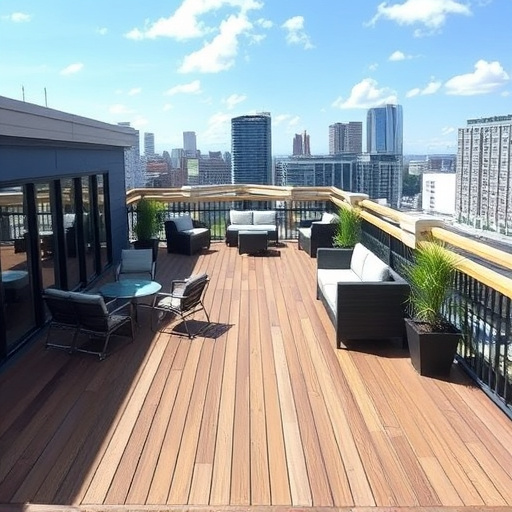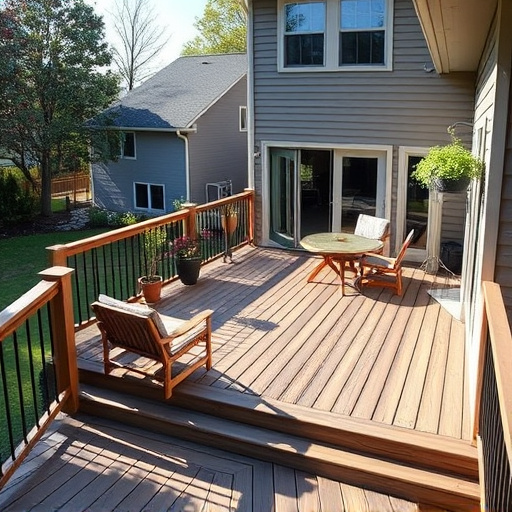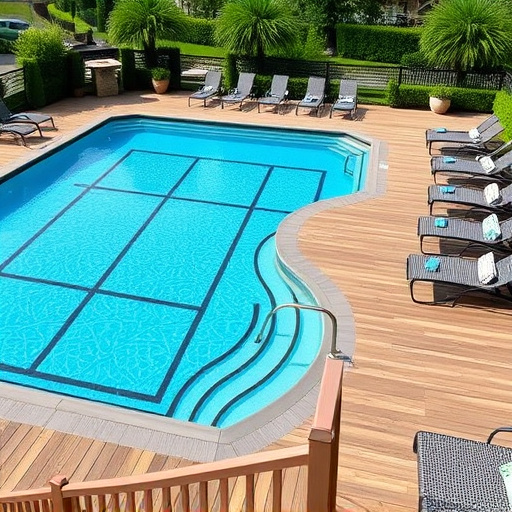When budgeting for residential decking, consider material selection. Traditional woods are popular but may be expensive with rising prices, while composite decking (plastic & wood fibers) offers a more affordable, low-maintenance option with better durability. Installation costs might be higher upfront for composites, but they provide long-term savings and longer lifespans compared to traditional materials. Other options include recycled plastic or bamboo, ideal for storm damage repair and sustainable design. Each material has unique advantages: natural wood looks classic but needs regular maintenance; composite is durable and low-maintenance but pricier; vinyl is initially cheaper, low-maintenance, resistant to rot & fading, and offers flexible design options.
Looking to transform your outdoor space without breaking the bank? Discover affordable residential decking options that offer both style and value. This comprehensive guide explores cost-effective materials, from wood to composite and vinyl, weighing their pros and cons. Learn how to design a stunning deck on a shoestring budget with creative layout ideas, color strategies, and DIY tips. Plus, master maintenance secrets to ensure longevity and keep costs low over time.
- Choosing the Right Material for Your Budget
- – Exploring cost-effective decking materials
- – Pros and cons of wood, composite, and vinyl decking
Choosing the Right Material for Your Budget
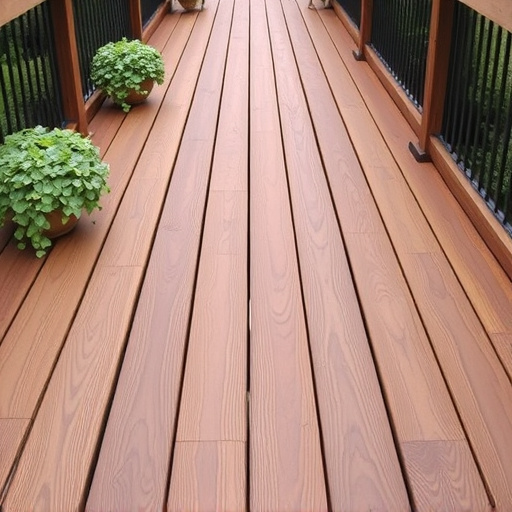
When considering affordable residential decking options, understanding your budget is just as important as the design. The key to staying within financial constraints lies in selecting the right material. Traditional woods like cedar and pine remain popular choices due to their natural beauty and affordability. However, with rising costs of raw materials, alternative composite decking solutions are gaining traction for both their low maintenance requirements and competitive pricing.
Composite materials, often made from a mix of plastic and wood fibers, offer an excellent balance between cost-effectiveness and durability. They resist rot, insects, and extreme weather conditions better than untreated wood, reducing the need for frequent repairs or replacements. While initial installation costs might be slightly higher compared to traditional decking, composite options pay off in the long run, especially when considering low maintenance needs and extended lifespans—a factor that’s also relevant when discussing related home exterior projects such as roof replacement or siding replacement.
– Exploring cost-effective decking materials
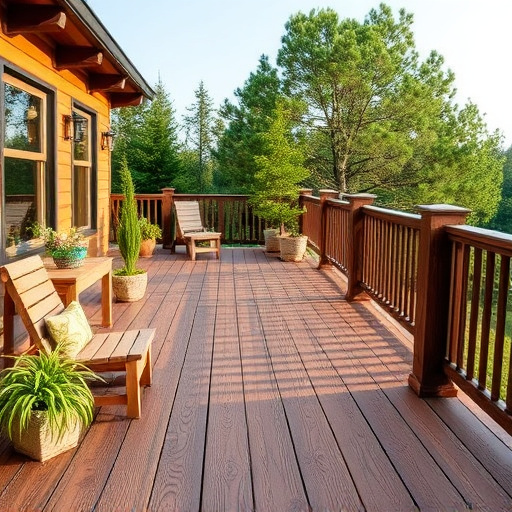
When it comes to enhancing your outdoor living space, residential decking offers a cost-effective and visually appealing option. There are numerous materials available in the market today that can transform your backyard into a stylish retreat without breaking the bank. One of the most popular choices is composite decking, which is known for its durability and low maintenance requirements. This synthetic material mimics the look of wood but requires less upkeep, making it an attractive alternative for busy homeowners.
Additionally, exploring options like recycled plastic or bamboo decking can further reduce costs while still providing a sustainable and environmentally friendly solution. These materials are not only affordable but also offer unique textures and colors, allowing you to create a distinctive outdoor ambiance. Whether you’re looking to replace an old deck after storm damage repair or simply enhance your residential roofing and siding installation, these cost-effective options provide both beauty and longevity for your home’s exterior.
– Pros and cons of wood, composite, and vinyl decking
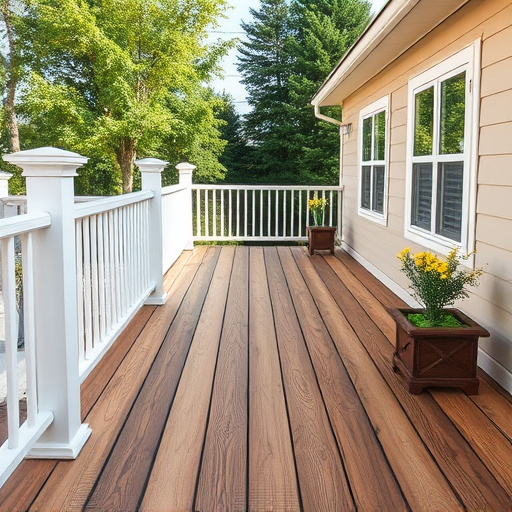
When it comes to residential decking options, wood, composite, and vinyl are popular choices for their aesthetic appeal and functionality. Residential decking made from wood offers a classic look and is relatively affordable. However, natural wood is susceptible to rot, mold, and insect damage, requiring regular maintenance and replacement. Composite decking, a blend of wood fibers and plastic, is durable and low-maintenance but can be more expensive than wood and may not match the natural aesthetic some homeowners prefer.
On the other hand, vinyl decking is an excellent option for those seeking low-maintenance solutions. It’s resistant to rot, mold, and fading, and it doesn’t require painting or staining. While initially cheaper than composite decking, vinyl may not offer the same level of realism in appearance as its composite counterpart. For home exterior services, vinyl stands out for its ease of cleaning and minimal maintenance requirements. Unlike wood and composite materials, vinyl won’t warp, crack, or split, making it a reliable choice for both residential decking and even commercial siding. Moreover, vinyl’s flexibility allows it to be used in various designs, catering to different aesthetic preferences.
When it comes to affordable residential decking options, there’s something for every taste and budget. By understanding the pros and cons of various materials like wood, composite, and vinyl, you can make an informed decision that not only fits your financial constraints but also enhances your outdoor living space. Whether you’re looking for low-maintenance or natural beauty, there are cost-effective solutions that can transform your backyard into a delightful oasis. So, take a dive into these options and start planning your dream deck today!






